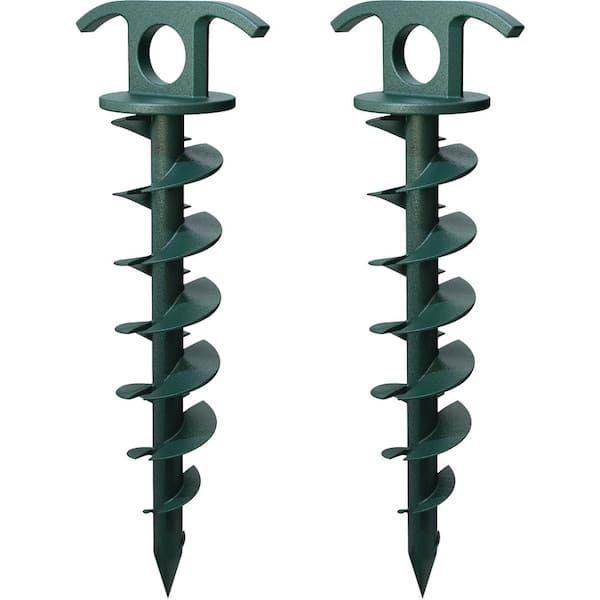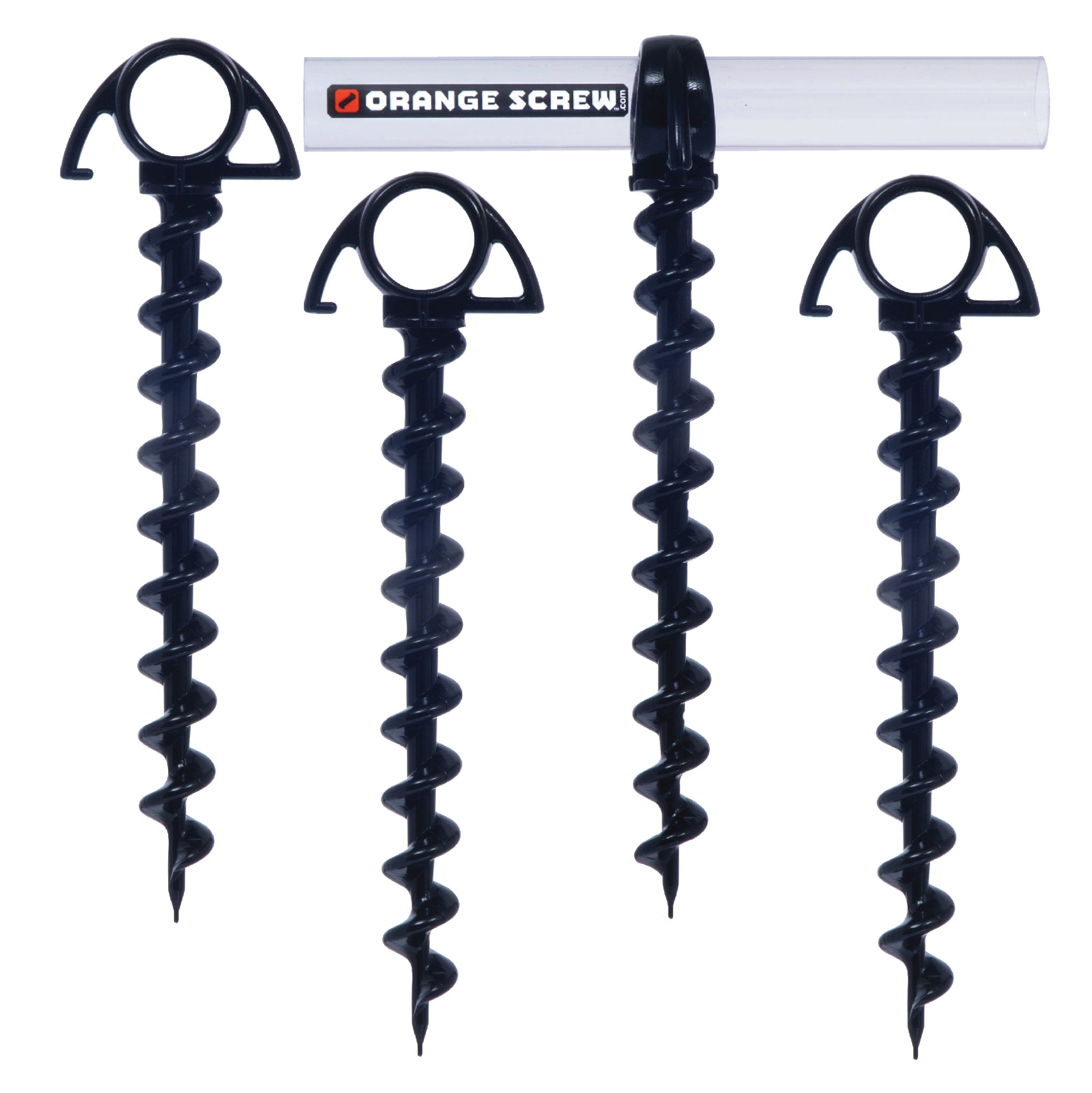Industry Professionals Offer Tips on the Best Ground Anchor Solutions
Industry Professionals Offer Tips on the Best Ground Anchor Solutions
Blog Article
Explore the Different Sorts Of Ground Support for Your Next Project
From auger anchors, which stand out in varied soil conditions, to stake supports designed for temporary setups, the choices are various. In addition, concrete and screw supports existing unique advantages in certain situations, while deadman supports are customized for applications calling for resistance to side pressures.

Auger Anchors
Auger anchors are a prominent choice in numerous construction and landscaping projects as a result of their one-of-a-kind style and reliable anchoring abilities. These supports include a helical screw-like shaft that is driven right into the ground, enabling a safe and secure and stable hold. The spiral layout assists in simple setup and takes full advantage of resistance against lateral forces, making auger anchors specifically reliable in applications such as fencing, short-lived structures, and erosion control.
The installment process of auger anchors is reasonably simple. They can be manually or mechanically mounted, depending upon the dimension and required deepness. This versatility enables their usage in varied dirt conditions, from sandy to clayey surfaces. Moreover, auger supports can be easily removed and recycled, which adds to their cost-effectiveness and sustainability.
One of the substantial advantages of auger anchors is their ability to distribute lots evenly throughout the surrounding soil, decreasing the threat of soil disturbance and decreasing environmental impact. Additionally, they are much less susceptible to loosening up or heaving gradually contrasted to standard securing techniques. Auger anchors are a superb option for jobs calling for trusted and durable anchoring services.

Stake Anchors
When it comes to protecting frameworks in a selection of outside applications, stake supports provide a uncomplicated and reputable service. These anchors are usually built from durable products such as steel or aluminum, designed to endure environmental stresses while giving optimum security. Their simple layout enables fast installment, making them an ideal selection for long-term or momentary anchoring requirements.
Risk supports are specifically helpful in securing tents, covers, and other light-weight frameworks against wind and weather condition. They operate by being driven right into the ground at an angle, developing a strong hold that withstands pull-out pressures - Ground Anchor. The performance of risk anchors depends upon numerous elements, consisting of soil type, dampness web content, and the angle of installation
For included safety, many stake supports feature add-on factors for straps or ropes, permitting stress changes as necessary. In applications such as landscaping or building and construction, they can properly stabilize tools or frameworks on uneven surface. Generally, stake supports offer a flexible and affordable service for securing numerous outdoor setups, making them a preferred choice for service providers and DIY fanatics alike.
Concrete Anchors
Concrete anchors give a robust option for safeguarding structures to concrete surface areas, ensuring stability and safety in numerous applications. These supports are vital for projects varying from household constructions to large-scale industrial installments. They come in different kinds, including development anchors, sticky supports, and undercut supports, each created for details lots needs and ecological conditions.
Sticky anchors utilize high-strength epoxy or material to bond the support to the concrete, providing superior load-bearing capacities, especially in cracked concrete scenarios. Undercut supports develop an unique shape within the concrete, supplying extraordinary holding power, particularly in applications where tensile loads are widespread.
When performed properly, concrete supports considerably boost the architectural honesty of various jobs, making them essential in modern-day construction methods. Comprehending the details needs of your task will assist in selecting website link the ideal kind of concrete support for the task.
Screw Anchors

Screw anchors are a versatile fastening remedy that can be properly employed in a selection of applications where conventional concrete anchors might not be adequate. These supports consist of a helical design that allows them to be conveniently driven right into the ground, making them excellent for usage in soil and other substratums. Their unique structure offers superb holding power and resistance to pull-out pressures, making them appropriate for many jobs, from landscaping to architectural assistance.
Among the key benefits of screw supports is their convenience of setup. They require minimal tools and can frequently be installed without the requirement for excavation, which conserves both time and labor prices. In addition, screw supports can be gotten rid of and recycled, offering a sustainable remedy for momentary applications.
Screw anchors are specifically valuable in areas where soil problems are testing, such as loose or sandy dirts. Their capacity to be installed at differing midsts enables modification based on specific job requirements. Overall, screw anchors provide a reliable and reliable anchoring technique, making them an outstanding choice for designers and service providers looking for reliable solutions for their jobs.
Deadman Anchors
Deadman anchors serve as a robust option for supporting structures in challenging problems, specifically where typical securing methods might fail. These supports are composed of large, hefty things buried underground, which create resistance versus lateral forces. The style generally involves a horizontal element, such as a block of concrete or a metal plate, buried in the dirt, his explanation to which straps or cables are connected.
The effectiveness of deadman anchors depends on their capability to distribute lots over a bigger area, reducing the danger of failure in unstable soil conditions. They are especially helpful in applications such as maintaining wall surfaces, short-lived structures, and incline stablizing, where soil movement can endanger the stability of the structure.
Installment of deadman supports requires cautious planning to ensure they are positioned at the right deepness and positioning, optimizing their load-bearing capability. While they might call for more labor and material than light-weight anchors, their reliability in unfavorable problems makes them indispensable for long-term projects. Additionally, deadman supports are functional and can be adapted to different applications, making them a go-to selection for designers dealing with distinct difficulties in their projects.
Conclusion
In summary, selecting the appropriate sort of ground anchor is essential for making certain security and protection in different jobs. Auger anchors master varied dirt conditions, while stake anchors fit temporary applications. For concrete surface areas, growth and sticky anchors give reliable choices, and screw anchors use versatility in challenging surfaces. Deadman supports are especially efficient in standing up to side pressures for keeping walls. Careful factor to consider of these options will enhance project outcomes and architectural integrity.
Additionally, concrete and screw anchors present distinct benefits in specific situations, while deadman anchors are customized for applications needing resistance to lateral forces - Ground Anchor.Auger supports are a preferred selection in numerous construction and landscaping projects due to their unique style and effective anchoring capabilities. They come in various kinds, including development supports, sticky anchors, and undercut anchors, each developed for details visit this web-site load needs and environmental problems
Sticky anchors use high-strength epoxy or material to bond the anchor to the concrete, using premium load-bearing capacities, specifically in cracked concrete scenarios. On the whole, screw supports give a effective and reliable securing approach, making them an exceptional option for engineers and service providers seeking efficient remedies for their projects.
Report this page